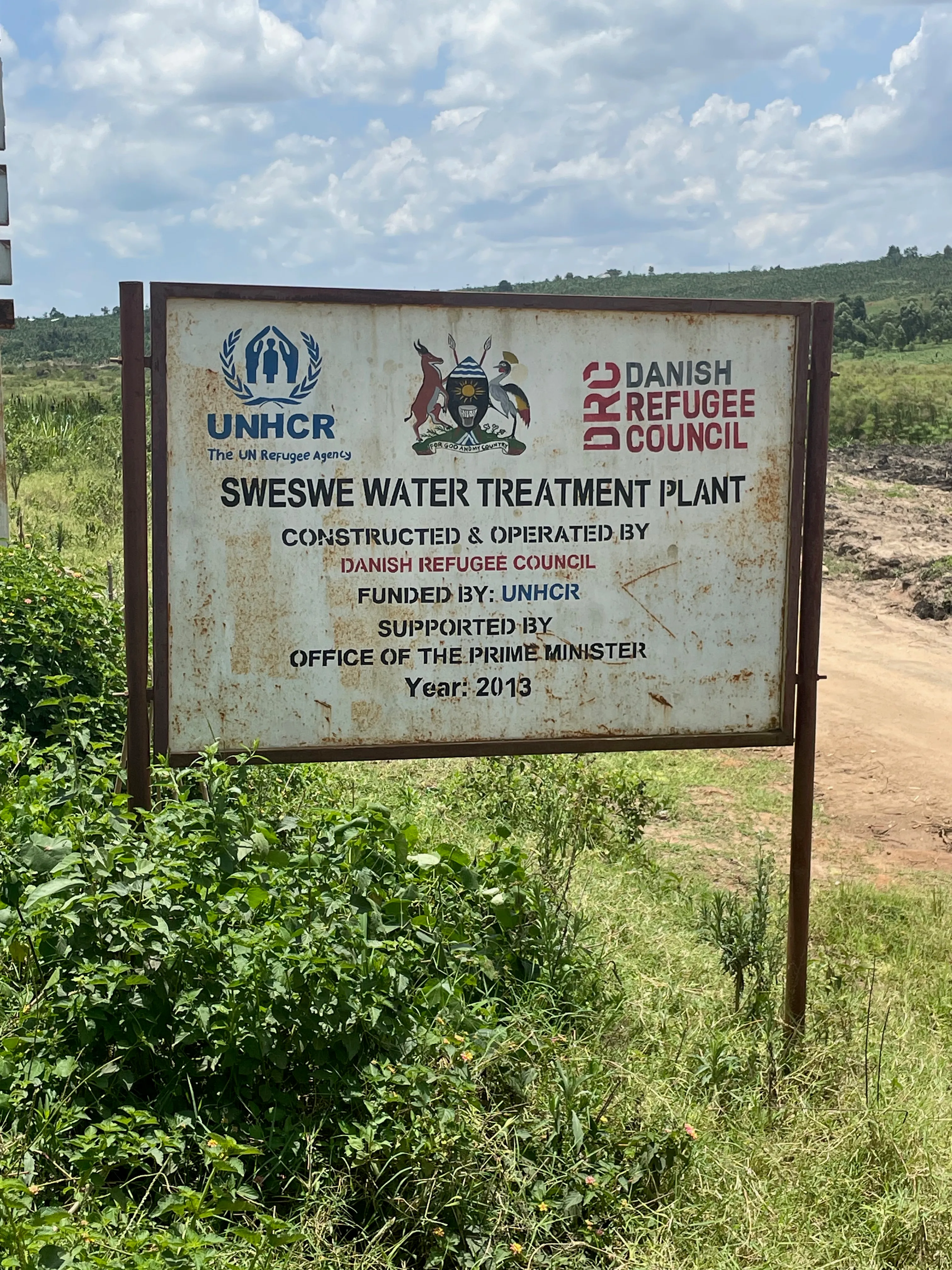Kyaka II – Testing new territory for the SWOT in Uganda

The Safe Water Optimization Tool (SWOT) is a web-based water quality modelling platform that generates site-specific, evidence-based water chlorination targets to ensure water remains safe to drink all the way to the point-of-consumption. In this short blogpost series, we are excited to share some of the initial learning from our HIF-funded WASH Evidence Challenge study in Uganda. This series builds on a previous post which introduced the study and outlined our motivations and objectives for our research in Uganda and Somaliland.
In this series, we’re looking at the field work being carried out in the Kyaka II Refugee Camp in Uganda, where we are testing how the SWOT can help ensure water safety in two new water supply use cases: water trucking and piped water systems reliant on surface water.
So far, most of the experience we have with the SWOT around the world comes from piped water networks using groundwater sources. Working in Kyaka gives us the opportunity to test the SWOT with treated surface (river) water delivered both through a piped network and by water trucking. What we learn from this research will help us improve the robustness of the SWOT across a range of water types, making it a more accurate and useful tool for field teams tasked with maintaining water safety in challenging environments.
The Kyaka II camp in Kyegegwa District, Western Uganda, is home to approximately 136,000 people. While the site was originally set up in 2005 to house refugees fleeing violence in neighbouring Rwanda, the population has evolved over the years, reflecting the different crises impacting the region. The general population trend had been steadily decreasing however, in December 2017 the camp experienced a rapid influx of tens of thousands of people fleeing conflict in the Democratic Republic of Congo (DRC). The DRC is now the most common country of origin among the refugee population. Kyaka II is managed by UNHCR (United Nations High Commissioner for Refugees) and the Ugandan Office of the Prime Minister, with Oxfam responsible for installation and operation of many of the water supply systems servicing the camp.
We are trialling the SWOT in several areas of Kyaka II that are supplied with surface water from a reservoir formed by a low head dam across a tributary of the Kaija river. From this reservoir, water is pumped to the Sweswe water treatment plant where water is pre-treated by flocculation-coagulation and sedimentation to remove solids and aeration to remove dissolved chemicals (iron, mostly) before being chlorinated and distributed through over 20km of pipes to the surrounding areas. In some areas not yet connected to the water network, treated water is distributed to remote water points by water truck. This reservoir supplies almost a third of the total daily water needs at the Kyaka II settlement. Oxfam is keen to ensure water safety of the supplies from the reservoir, providing an ideal trial site for the SWOT. In the next post we’ll dig into the details around how the research is being conducted and what we hope to learn.

Stay updated
Sign up for our newsletter to receive regular updates on resources, news, and insights like this. Don’t miss out on important information that can help you stay informed and engaged.
Related articles
.png)


Explore Elrha
Learn more about our mission, the organisations we support, and the resources we provide to drive research and innovation in humanitarian response.